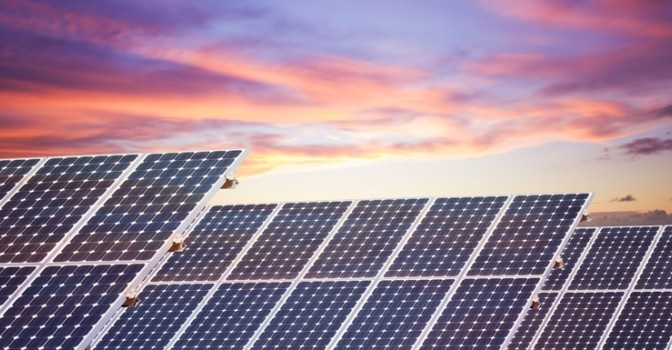Duke Energy Florida announced plans Thursday to launch a major solar power effort that will produce electricity equivalent to that of a small power plant.
Duke Energy is venturing into solar power in a big way with plans to add up to 500 megawatts of utility-scale solar in Florida by 2024.
“Innovative investments in solar energy will provide customers with more options to use this resource, while diversifying our energy mix and continuing to meet the needs of Florida’s growing economy and population,” said Alex Glenn, state president, Duke Energy Florida.
The addition of solar was filed yesterday as part of the company’s 2015 Ten-Year Site Plan proposed to the Florida Public Service Commission (FPSC).
Construction of the first site – up to five megawatts – will begin later this year with 35 megawatts expected to be completed by 2018. These initial solar energy facilities will enable Duke Energy Florida to evaluate costs, and to monitor the effects of this resource on the electric grid infrastructure.
The new solar energy facilities will complement already planned investments by Duke Energy Florida to build a state-of-the-art, highly efficient combined-cycle natural gas plant in Citrus County, upgrade its combined-cycle Hines plant in Polk County and purchase Calpine’s Osprey plant, also in Polk County.
These investments will enable the company to meet a significant need for additional generation beginning in 2018 and to retire half of its Florida coal-fired fleet by that same year.
Since 2005, Duke Energy Florida has invested more than $2 billion on upgrades to its generating facilities that have reduced almost 9.8 million tons of carbon dioxide emissions (CO2). That reduction is equal to removing almost 2 million cars from roads or planting more than 2.5 million acres of trees.
Over the past eight years, Duke Energy has invested more than $4 billion in wind and solar facilities in 12 states and this includes the company’s Stanton Solar Farm located in Orange County. The company plans to invest $2 billion to $3 billion in renewable energy in the next five years.
“The University of South Florida in St. Petersburg has long enjoyed a partnership with Duke Energy, which shares our values around sustainability and has established itself as a leader in developing solar and renewable programs,” said Jessica Blais, USFSP communications director. “We are excited that they will bring this expertise to others in Florida.”
One megawatt of large-scale solar is equivalent to about 200 typical residential rooftop systems. The number varies by state and conditions.
Paving the way for solar energy
For many years, Duke Energy Florida has advanced solar technology in its service area, including:
- Partnering with the University of South Florida in St. Petersburg to fund a $1 million solar photovoltaic (PV) installation that integrates a battery storage system on the school’s campus.
- Funding more than $8 million to assist residential and commercial customers who installed approximately 2,000 of their own solar PV systems.
- Funding more than $7 million in solar PV system installations at approximately 50 K-12 schools to help foster renewable energy education. Some of these schools also serve as emergency shelters.
- Establishing a new Solar Service Center to safely and reliably integrate about 20 megawatts of rooftop solar owned by Duke Energy Florida’s customers on the electric grid.
Duke Energy Florida
Duke Energy Florida owns coal-fired and natural gas generation providing about 9,000 megawatts of owned electric capacity to approximately 1.7 million customers in a 13,000-square-mile service area.
With its Florida regional headquarters located in St. Petersburg, Fla., Duke Energy is the largest electric power holding company in the United States with approximately $121 billion in total assets. Its regulated utility operations serve approximately 7.3 million electric customers located in six states in the Southeast and Midwest. Its commercial power and international energy business segments own and operate diverse power generation assets in North America and Latin America, including a growing portfolio of renewable energy assets in the United States.


